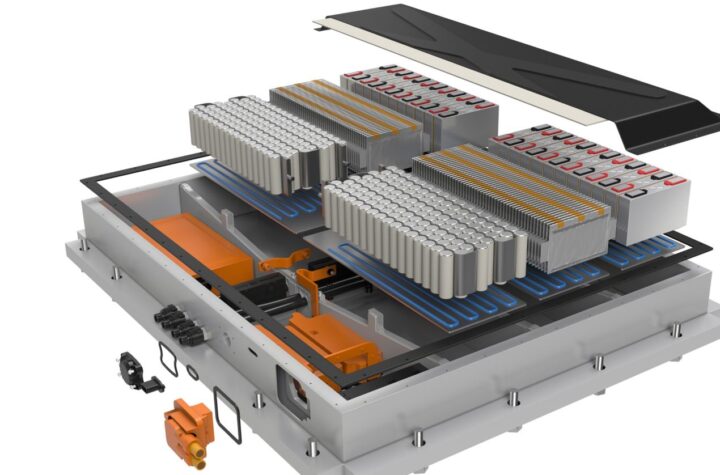
A range of United States government-supported initiatives designed to reduce the country’s dependence on foreign oil and the country’s carbon footprint are leading the development of advanced vehicles.
Earlier this year the government committed US$55 million for another 31 projects that will accelerate research and development of critical vehicle technologies. The projects support the goals of President Barack Obama’s EV Everywhere Grand Challenge, as well as other petroleum reduction objectives such as improving the efficiency of combustion engines and the use of alternative fuels such as natural gas.
The EV Everywhere Grand Challenge seeks to make the US automotive industry the first to produce plug-in electric vehicles (PEVs) that are as affordable and convenient as today’s gasoline-powered vehicles by 2022. In just the last several years, significant cost reductions and improvements in vehicle performance have had a dramatic impact on the U.S. automotive market. PEV sales continue to grow – sales in the first six months of 2014 were over 30% higher than the same period in 2013 – and the cost of manufacturing advanced batteries for PEVs has dropped by over 60% since 2009.
Automotive Industries (AI) asked Patrick Davis, Director of the Vehicle Technologies Office in the Office of Energy Efficiency and Renewable Energy (EERE) at the US Department of Energy (DOE), what the objective is in supporting projects such as the 31 receiving the US$55 m in funding.
Davis: The Energy Department is investing in competitively-awarded, cost-shared projects because accelerating the development of sustainable transportation technologies is essential to addressing our nation’s energy, environmental, and economic security. The U.S. continues to send nearly $1 billion a day overseas for oil. In addition, the U.S. transportation sector accounts for approximately one-third of U.S. energy-related carbon emissions and, despite recent progress in reducing
other emissions, transportation remains a significant source of air pollution. To address these pressing challenges and help Americans reduce their transportation energy costs, there are two key solution pathways: (1) use conventional fuels more efficiently, and (2) replace them with cost-competitive, domestically-produced alternatives. Public investment in advanced transportation technologies that enable both of these pathways will improve the nation’s energy security, reduce greenhouse gas emissions, and strengthen U.S. global economic competiveness.
AI: What do you hope will be the result of this investment?
Davis: We expect that these investments will advance the state-of-the-art and our efforts to achieve the aggressive but achievable technical targets that we have set with input from industry. Achieving these technical targets is a key step to allowing these technologies to enter the market in the years ahead.
AI: What kind of response have you had from industry in speeding up R&D in clean vehicle technologies?
Davis: We work very closely with industry to accelerate the development of clean vehicle technologies. We have multiple ways of working with industry, including government-industry partnerships for precompetitive R&D. Through the U.S. DRIVE Partnership we coordinate with 12 different private partners representing the automotive, fuels, and electric utility industries to discuss precompetitive R&D needs; develop joint goals, technical targets, and technology roadmaps; and evaluate R&D progress. Similarly, the 21st Century Truck Partnership is a collaborative effort among 19 private partners and government agencies, with a focus on medium- and heavy-duty truck technologies.
AI: Tell us a little about the 31 projects that the recent tranche of investment is going into.
Davis: The projects are intended to remove the significant barriers that currently prevent advanced vehicles from entering the market, or from expanding market share. Some of the critical technologies we are investing in are: • “Beyond lithium-ion technologies” for batteries for plug-in electric vehicles (PEVs)
- Wide bandgap semiconductors
- Lightweight materials research
- Advanced climate control technologies
- Dual-fuel/bi-fuel technologies to reduce petroleum usage
- High-efficiency, cost-competitive engine and powertrain systems for light-duty vehicles
- Advanced lubricants and coatings to increase efficiency
AI: The US Army has also committed nearly US$4 m. What shape will that investment take?
Davis: The US Army’s funding is focused on two different areas:
1) improving beyond lithium-ion battery technologies and
2) reducing friction and wear in powertrains. In addition to its direct funding, the Army will perform important test and evaluation activities at its Warren, MI facility on tires developed through other fuel-efficiency projects.
AI: How confident is your department in meeting the targets of the EV Everywhere blueprint?
Davis: The goals described in the EV Everywhere Blueprint are ambitious “stretch goals” that we know will be difficult to reach. The Energy Department established these stretch goals in consultation with stakeholders across the industry, through a series of workshops held during the summer and fall of 2012 as well as an open public comment period. It will be a challenge, but we are confident in our technology roadmaps and research plans, as well as the strong partnerships we have established with industry and the academic community.
AI: What are some of the challenges being faced in meeting these challenges and how do you hope to see them overcome?
Davis: The major challenges for batteries include reducing the cost as well as the size and weight, which currently hinders PEV design optimization and performance. However, we have a robust research program focused on optimizing and simplifying battery pack design, improving manufacturing at the cell and pack level, improving the performance and durability while reducing the cost of battery materials, and improving thermal management techniques to keep battery temperature steady.
The challenges to electric drive systems include the use of rare earth materials in power electronics and high cost of on-board chargers. Our research focuses on non rare earth motor architectures, wide bandgap technologies, thermal management technologies, the integration of power electronic and motor technologies into traction drives, and on-board chargers will help overcome these challenges.
Challenges in the lightweight materials area are cost and the difficulty of manufacturing lightweight materials for use in vehicles. Our research focuses on improving lightweight materials’ mechanical characteristics, cost, manufacturability, joining ability, and corrosion protection, as well as supporting design tools to facilitate faster development of new materials.
Although the majority of our efforts focus on research and development, there are deployment-related challenges to expanding PEV market growth as well. These include consumer “range anxiety;” a lack of consistent codes, standards, or permitting procedures for PEVs; a limited number of mechanics and first responders trained in working with PEVs; and low public awareness of the benefits and characteristics of PEVs. Through its Workplace Charging Challenge, the Energy Department provides technical assistance and information about workplace charging. Through its Clean Cities program, it supports a variety of outreach efforts and tools to educate the public; encourage municipalities to adopt consistent codes, standards, and permitting processes; and provide technical resources for training mechanics, code officials, and first responders












More Stories
DuPont materials science advances next generation of EV batteries at The Battery Show
How a Truck Driver Can Avoid Mistakes That Lead to Truck Accidents
Car Crash Types Explained: From Rear-End to Head-On Collisions